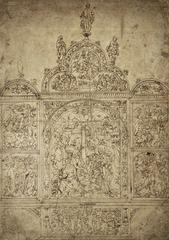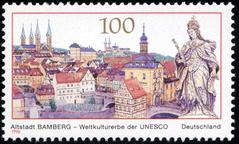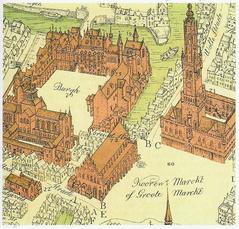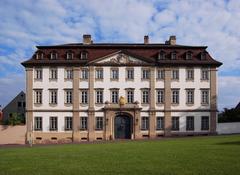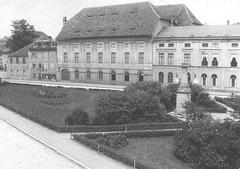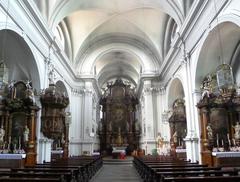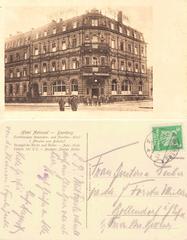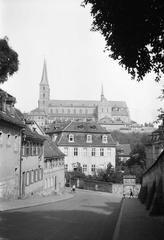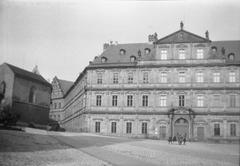Gasthaus Bamberg Visiting Hours, Tickets, and Historical Sites Guide
Date: 14/06/2025
Introduction: Why Bamberg’s Gasthaus Culture is a Must-Visit
Nestled in northern Bavaria, Bamberg is a UNESCO World Heritage city renowned for its impeccably preserved medieval architecture and, perhaps even more distinctively, its enduring Gasthaus tradition. These historic inns and breweries have woven themselves into the city’s social fabric since the 11th century, originally serving travelers on medieval trade routes before evolving into communal hubs for locals and visitors alike. Bamberg’s Gasthäuser are not only culinary institutions offering authentic Franconian cuisine and iconic Rauchbier, but also architectural treasures housed in medieval and baroque buildings, many of which retain original woodwork, vaulted cellars, and timber-framed facades (worldheritagesites.net, bamberg.info, theinvisiblenarad.com).
This guide explores the origins, cultural significance, and modern revival of Bamberg’s Gasthäuser, while providing you with essential visitor information—opening hours, ticketing, accessibility, and expert tips—so you can experience the living tradition and vibrant community spirit that define Bamberg’s celebrated inns.
Table of Contents
- Historical Background: Medieval Origins to Modern Revival
- Architectural and Cultural Significance
- Visitor Information: Gasthaus Hours, Tickets, and Accessibility
- Notable Gasthäuser and Breweries
- Rituals, Customs, and Etiquette
- Practical Travel Tips
- Bamberg’s Historic Sites: Visiting Hours, Tickets, and Accessibility
- FAQs
- Visuals and Interactive Media
- Summary and Final Tips
- References
Historical Background: From Medieval Inns to Modern Wirtshaus
Medieval Origins and Growth
The Gasthaus tradition in Bamberg dates to the 11th and 12th centuries, driven by the city’s location on key trade routes and its status as a seat of the Holy Roman Emperor. Early Gasthäuser served as hostelries and taverns, offering food, drink, and shelter to merchants, pilgrims, and travelers (worldheritagesites.net, bestplacestovisitgermany.com).
Over time, these establishments clustered near the cathedral precinct, the Old Town Hall, and Bamberg’s bustling market squares, supporting the city’s urban development and social life.
The Gasthaus as a Social Institution
During the early modern period, Gasthäuser became gathering places for meals, celebrations, guild meetings, and even local governance. They served as Bamberg’s “living rooms,” fostering community cohesion and tradition (tempestinatankard.com).
By the 18th and 19th centuries, distinctions emerged between Gasthaus, Gasthof, and Wirtshaus—yet all remained at the heart of social life.
Brauereigasthäuser and Beer Heritage
Bamberg’s unique Brauereigasthäuser (brewpubs) emerged alongside the city’s brewing tradition, with roots in the 14th century. These inns offered fresh beer—most notably the iconic Rauchbier—alongside Franconian dishes. Today, Bamberg boasts over 10 traditional breweries, including Schlenkerla and Klosterbräu, many still family-run and preserving centuries-old recipes (bamberg.info, bestplacestovisitgermany.com).
Urbanization and the Rise of the Wirtshaus
Industrialization in the 19th century and the advent of rail travel shifted the focus of Gasthäuser toward local patrons, giving rise to the Wirtshaus—a cozy neighborhood tavern distinguished by wood paneling, communal tables, and a warm, inviting ambiance (tempestinatankard.com).
20th and 21st Century Revival
World wars, economic shifts, and modern dining trends posed challenges to traditional Wirtshaus culture. Yet, the Slow Food movement and renewed interest in regional heritage have led to the revival and restoration of many historic Gasthäuser as cultural landmarks (tempestinatankard.com).
Architectural and Cultural Significance
Many Bamberg Gasthäuser are housed in centuries-old buildings, featuring half-timbered facades, vaulted cellars, and authentic interiors. These venues are not just places for eating and drinking—they are living museums preserving the city’s architectural and communal heritage (worldheritagesites.net). During festivals like Sandkerwa, Gasthäuser become the epicenter of celebrations, filled with music, local color, and Franconian hospitality (germany.travel).
Visitor Information: Hours, Tickets, and Accessibility
Popular Gasthäuser and Breweries
- Schlenkerla: Daily, 11:00 AM–11:00 PM. No ticket required; reservations recommended for groups.
- Brauerei Fässla: 10:00 AM–midnight; reservations advised during busy periods.
- Klosterbräu: 11:00 AM–10:00 PM; brewery tours by appointment.
- Spezial: 11:00 AM–10:00 PM; tour details upon request.
Tickets and Reservations
Entry is typically free, but reservations are highly recommended for dining, especially on weekends or during festivals. Brewery tours often require advance booking.
Accessibility
Due to the age and layout of many buildings, wheelchair access can be limited. Contact your chosen Gasthaus or brewery for details on accessibility.
Travel Tips
- Many Gasthäuser are conveniently located near Bamberg’s major historical sites, making them ideal for breaks during sightseeing.
- Guided walking tours frequently include visits to notable Gasthäuser.
Rituals, Customs, and Etiquette
Dining in a Bamberg Gasthaus is steeped in tradition:
- Greeting: A handshake and a friendly “Guten Appetit” at shared tables are customary (booka-local.com).
- Beer Rituals: Toasting (“Prost!”) with eye contact is important. A “Seidla” (half-liter) of the house beer is the typical order (deutschland.de).
- Tipping: Round up the bill or add 5–10%. Service is professional and generally reserved (wanderingermany.com).
- Language: German is standard, but English menus and service are common in tourist areas.
Practical Travel Tips
- Reservations: Book ahead for historic or popular Gasthäuser, especially during festivals (happytowander.com).
- Cash: Many venues prefer cash; card payments are becoming more accepted, but it’s wise to carry cash for smaller establishments.
- Dress Code: Casual attire is standard, though smart-casual is appreciated in upscale venues.
- Dietary Needs: While menus are traditionally meat-focused, vegetarian options are increasingly available (einhornskeller.de).
- Family-Friendly: Most Gasthäuser welcome children and offer kid-friendly options.
- Festival Time: Major events like Sandkerwa bring crowds; early reservations are essential.
Bamberg’s Historic Sites: Visiting Hours, Tickets, and Accessibility
Bamberg Cathedral (Bamberger Dom)
- Open: Daily, 9:00–18:00 (seasonal variations possible).
- Tickets: Entry is free; audio guides and tours available for a fee.
- Highlights: Masterpiece of Romanesque and Gothic architecture, tomb of Pope Clement II.
Altes Rathaus (Old Town Hall)
- Open: Tuesday–Sunday, 10:00–17:00.
- Tickets: Admission required for museum; combined tickets available.
Michaelsberg Abbey
- Open: Daily, 9:00–17:00.
- Tickets: Free entry; guided tours available.
Accessibility
- Many historical sites have limited accessibility. The Bamberg Card offers discounted admission and public transport (bamberg.info).
Accommodation and Dining
- Stay in traditional Gasthäuser like Gasthof Schiller or Gästehäuser Hölle 12 und Hölle 13 for authentic experiences (Booking.com - Gasthof Schiller, Booking.com - Hölle 12).
- Sample Franconian specialties and smoked beer at local inns and beer gardens.
Getting Around
- Old Town is best explored on foot.
- The Bamberg Card includes unlimited bus travel and museum entries for three days.
FAQs
What are typical opening hours for Bamberg Gasthäuser?
Most open between 10:00–11:00 AM and close between 10:00 PM–midnight.
Are tickets required?
No, but reservations are recommended for dining, especially during busy periods.
Is accessibility a concern?
Some historic Gasthäuser and monuments have limited wheelchair access. Check in advance.
Are brewery tours available?
Yes, often by appointment. Check brewery websites for details.
Is English spoken?
English is widely understood in tourist areas; many menus are bilingual.
Visuals and Interactive Media
Enhance your planning with virtual tours and photo galleries of Bamberg’s Gasthäuser, breweries, and historical sites. Look for images with alt tags such as “Bamberg Gasthaus interior,” “Schlenkerla Rauchbier beer hall,” and “Bamberg Cathedral visiting hours” for digital accessibility.
Summary and Final Tips
Bamberg’s Gasthäuser offer a window into the soul of Franconian culture—a blend of living history, architectural beauty, culinary excellence, and genuine hospitality. Whether you’re sampling Rauchbier at Schlenkerla, joining a festival crowd, or simply enjoying the ambiance of a centuries-old inn, you’re participating in a tradition that remains as vital today as it was a millennium ago.
Plan ahead by making reservations, checking accessibility, and exploring cultural events. For the latest tips, event updates, or personalized audio guides, download the Audiala app and visit official tourism resources (happytowander.com, dafteejit.com, bamberg.info).
References
- worldheritagesites.net
- bamberg.info
- theinvisiblenarad.com
- einhornskeller.de
- dafteejit.com
- cuisinevoila.com
- happytowander.com
- timetravelturtle.com
- Booka-Local
- Deutschland.de
- theadventurelion.com
- wanderineurope.com
- veronikasadventure.com
- Booking.com - Gasthof Schiller
- Booking.com - Hölle 12

